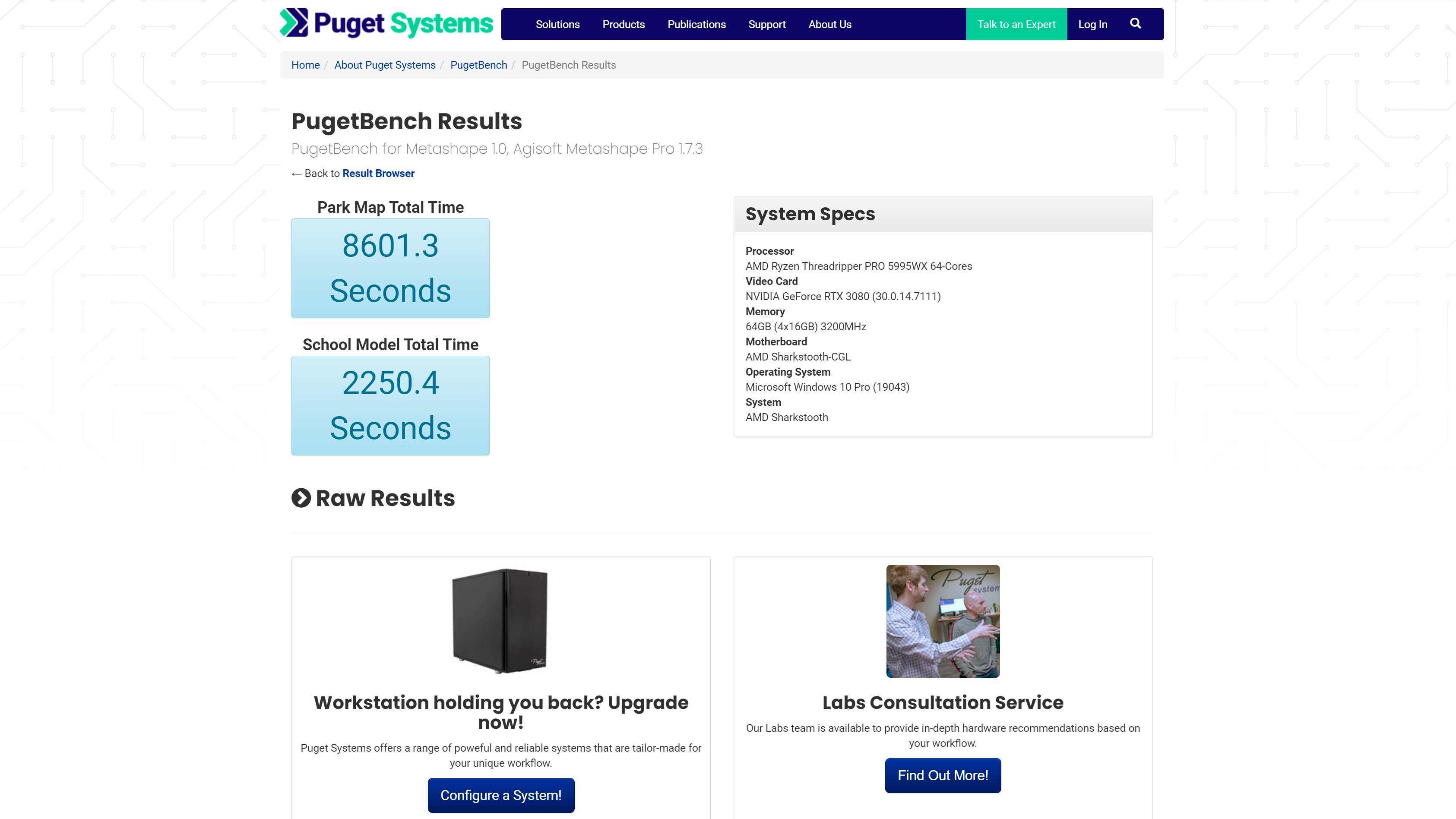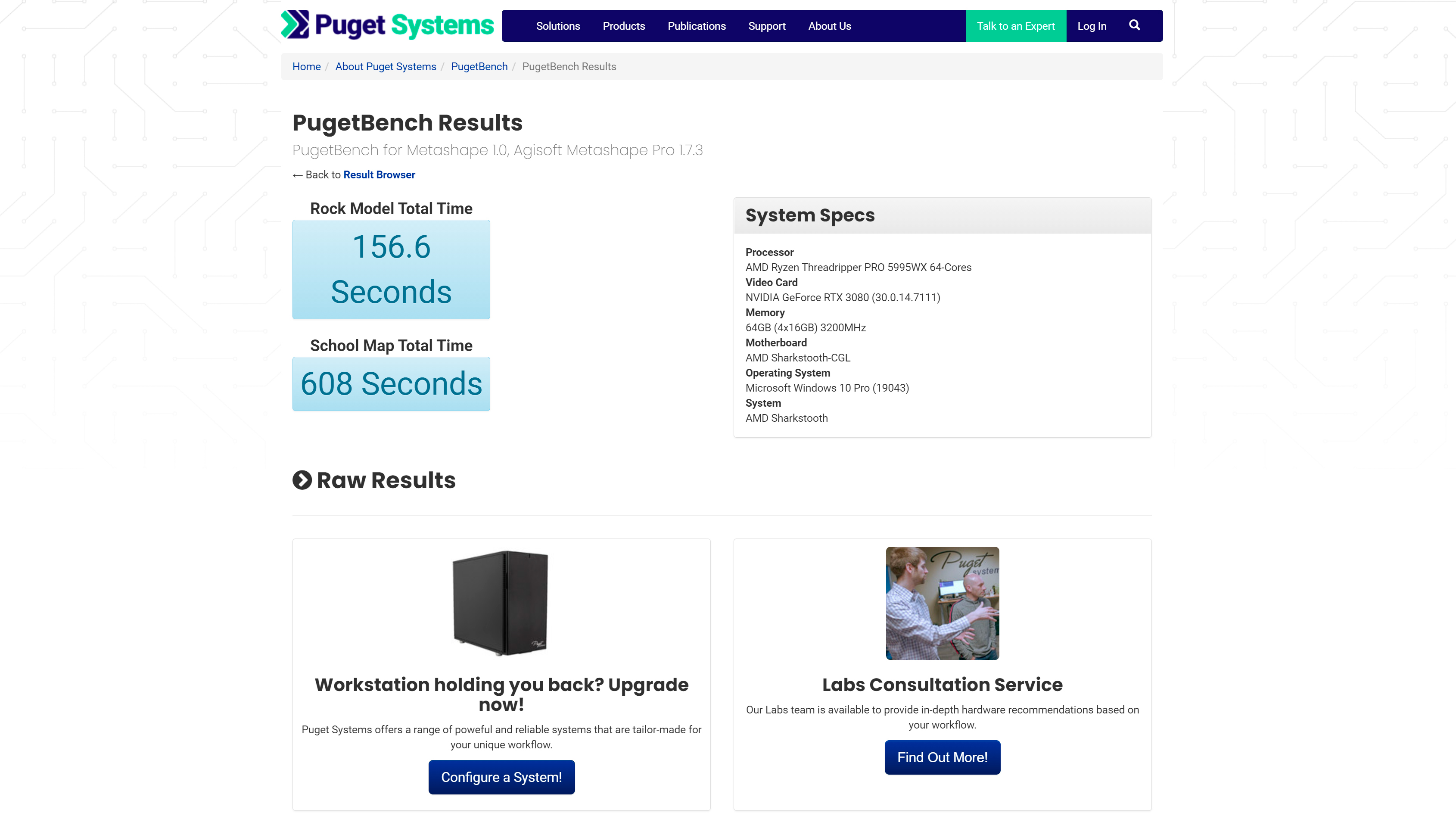Threadripper Pro 5995WX Thrashes 3995WX In Photogrammetry Benchmarks
The Threadripper Pro 5995WX has emerged in a new benchmark, laying any doubt of its existence to rest. The 64-core processor is the flagship SKU for AMD's upcoming Zen 3-powered Threadripper 5000 army and the direct successor to the Threadripper Pro 3995WX.
Aside from the core count, the Threadripper Pro 5995WX's other specifications remain a secret for now. Zen 3 brought a 19% IPC improvement to AMD's Ryzen desktop processors. Therefore, Threadripper should enjoy a similar level of performance uplift. AMD isn't expected to increase the number of cores on Threadripper (Pro), at least not for this generation. The configurations for Threadripper 5000 will probably remain the same at 64, 32, 24, 16, and 12 cores.
The current Threadripper chips slot into the sTRX4 socket, while the Pro variants go into the sWRX8 socket. Since both sockets are relatively new, Threadripper 5000 will likely continue to use the aforementioned sockets. Although it's not confirmed, Threadripper Pro 5000 should offer the same top-notch features as the existing Threadripper Pro 3000 lineup, such as 128 PCIe 4.0 lanes and support for eight-channel DDR4-3200 memory modules.
AMD Threadripper Pro 5995WX Benchmarks
| Processor | Rock Model | School Map | Park Map | School Model |
|---|---|---|---|---|
| Threadripper Pro 5995WX | 156.6 seconds | 608 seconds | 8,601.3 seconds | 2,250.4 seconds |
| Threadripper Pro 3995WX | 205.1 seconds | 844.3 seconds | N/A | N/A |
The Threadripper Pro 5995WX had emerged previously on the MilkyWay@home computing project. However, on this occasion, hardware sleuth Benchleaks spotted the 64-core chip in the PugetBench for Metashape 1.0 benchmark, which utilizes the Agisoft Metashape Pro 1.7.3 software. For those that are not familiar with the Metashape Pro, it's a popular software for photogrammetry.
The Threadripper Pro 5995WX completed the Rock Model test in 156.6 seconds, whereas the Threadripper Pro 3995WX finished the same test in 205.1 seconds. The Zen 3 flagship took 24% less time to conclude the test.
On the School Map test, the Threadripper Pro 5995WX and Threadripper Pro 3995WX finalized at 608 seconds and 844.3 seconds, respectively. The former delivered a 28% lower time.


Even though it's only a single benchmark, the future for Threadripper (Pro) 5000 looks bright, especially since Intel has been absent from the HEDT segment. The last Core X-series from Intel dates back to 2019 with the launch of the Cascade Lake-X lineup. It's hard to compete when the flagship Core i9-10980XE sits at 18 cores, and AMD's Threadripper is at 64 cores. The Cascade Lake-X chip holds its own in some workloads, but Threadripper easily excels in specialized workloads, particularly those that scale with NUMA architectures.
Get Tom's Hardware's best news and in-depth reviews, straight to your inbox.
Information revealed from the latest Gigabyte hack claims that AMD will reportedly launch Threadripper 5000 in November. However, the equivalent Pro variants may not debut until 2022.

Zhiye Liu is a news editor, memory reviewer, and SSD tester at Tom’s Hardware. Although he loves everything that’s hardware, he has a soft spot for CPUs, GPUs, and RAM.
-
hotaru251 Replyespecially since Intel has been absent from the HEDT segment.
i mean they'd have to pull a miracle to make a value competitor to TR... -
Jim90 Replyhotaru251 said:i mean they'd have to pull a miracle to make a value competitor to TR...
Would be good if they could compete - strong competition generally keeps pricing in check. AMD are 'slowly taking advantage' of the various situations currently (unfortunately for the consumer), though just as Intel did for so many years before Zen. -
ddcservices When AMD came out with the Zen3 generation and the claim was a 19 percent IPC improvement over Zen2, the initial thought by some was what we see from Intel, "Lets see how things really are in independent tests". Intel claimed a 19 percent IPC improvement in Rocket Lake compared to Comet Lake, but then the real tests showed an average of 9 percent, but then, a real world improvement of 0 improvement. Compare that to Zen3, where there really does seem to have been a 19% improvement in IPC over Zen2, with significant performance improvements.Reply
Now, for Intel to actually get back to being competitive, a proper MCM design is needed, since these monolithic designs make higher core counts VERY difficult and expensive. The reason AMD can crank out 64 core chips is because AMD can just combine eight different 8-core CCDs into the same chip, and the fab process for those isn't a problem. So, after over four years of AMD doing well with a MCM design(using Infinity Fabric to link each CCX/CCD together), why doesn't Intel have a competing technology?